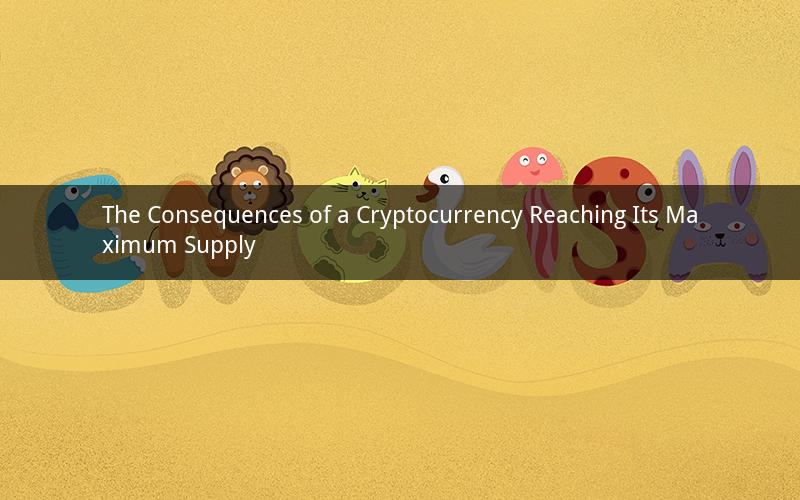
When a cryptocurrency reaches its maximum supply, it marks a significant milestone in its journey. This event, often referred to as the "max supply cap," has far-reaching implications for the cryptocurrency's value, market dynamics, and the broader blockchain ecosystem. In this article, we will delve into the various consequences that arise when a cryptocurrency reaches its maximum supply.
1. Value Appreciation
One of the most immediate consequences of a cryptocurrency reaching its maximum supply is the potential for its value to appreciate. As the supply becomes scarce, the demand for the cryptocurrency may increase, leading to a rise in its price. This is because there will be fewer coins available for investors and users to purchase, making the cryptocurrency more valuable.
2. Deflationary Pressure
A cryptocurrency with a maximum supply is subject to deflationary pressure. Since new coins are no longer being minted, the total supply of the cryptocurrency will remain constant over time. This means that as the economy grows and the demand for the cryptocurrency increases, its value will likely rise, leading to deflationary pressure on the currency.
3. Reduced Inflation Risk
When a cryptocurrency reaches its maximum supply, it eliminates the risk of inflation. Unlike fiat currencies, which can be subject to inflation due to excessive money printing by central banks, cryptocurrencies with a maximum supply are immune to this risk. This can make them a more attractive investment option for those looking to protect their wealth against inflation.
4. Potential for Market Manipulation
Despite the potential for value appreciation and reduced inflation risk, reaching the maximum supply of a cryptocurrency can also introduce new challenges. One of these challenges is the potential for market manipulation. With a finite supply, a group of individuals or entities could attempt to control the market by hoarding a significant portion of the cryptocurrency and then selling it all at once, causing the price to plummet.
5. Impact on Blockchain Ecosystem
The impact of a cryptocurrency reaching its maximum supply extends beyond the cryptocurrency itself. It can also have a ripple effect on the broader blockchain ecosystem. For instance, other cryptocurrencies that share similar supply characteristics may see increased interest and investment as investors seek alternative deflationary assets.
Now, let's explore some common questions related to the maximum supply of cryptocurrencies:
Question 1: What is the maximum supply of Bitcoin?
Answer: The maximum supply of Bitcoin is capped at 21 million coins. This limit was set by the creator of Bitcoin, Satoshi Nakamoto, to ensure that the currency would remain scarce and deflationary.
Question 2: Can a cryptocurrency's maximum supply be changed?
Answer: In most cases, a cryptocurrency's maximum supply cannot be changed once it has been established. However, some projects have implemented mechanisms that allow for adjustments to the supply cap in the future.
Question 3: Why do some cryptocurrencies have a maximum supply?
Answer: Cryptocurrencies with a maximum supply are designed to mimic the scarcity of precious metals like gold. By limiting the total supply, these cryptocurrencies aim to create a deflationary environment that can protect against inflation and increase their value over time.
Question 4: How does reaching the maximum supply affect the mining process?
Answer: When a cryptocurrency reaches its maximum supply, mining rewards will eventually decrease to zero. This will likely lead to a decrease in the number of miners participating in the network, as the rewards become less attractive.
Question 5: Can reaching the maximum supply of a cryptocurrency lead to a market crash?
Answer: While reaching the maximum supply of a cryptocurrency can introduce new challenges, such as potential market manipulation, it is unlikely to lead to a market crash. The value of a cryptocurrency is influenced by various factors, including market demand, technological advancements, and regulatory changes, not just the supply cap.
In conclusion, when a cryptocurrency reaches its maximum supply, it can have significant implications for its value, market dynamics, and the broader blockchain ecosystem. While there are potential challenges, such as market manipulation, the scarcity and deflationary nature of these cryptocurrencies can also make them attractive investment options for those looking to protect their wealth against inflation.